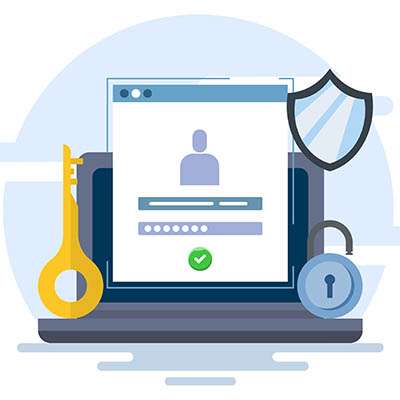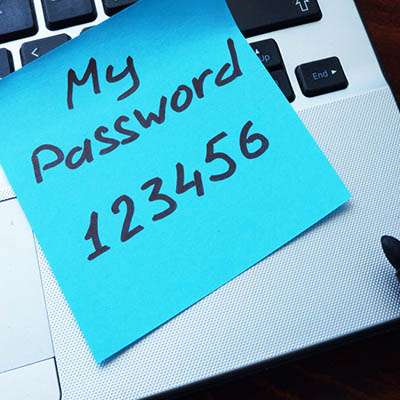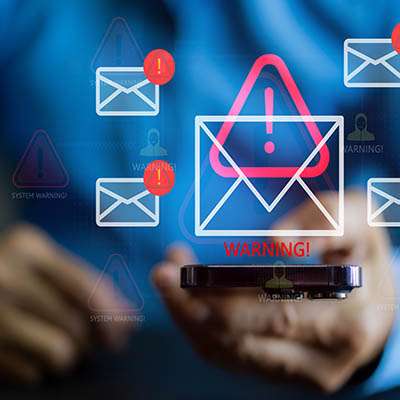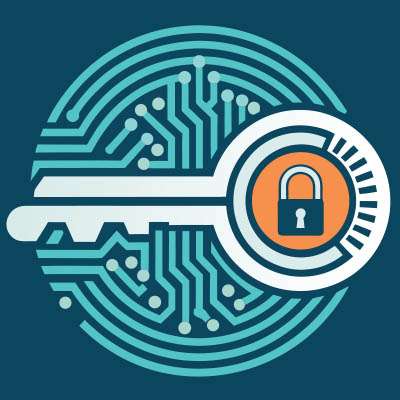Have you ever stopped to ask yourself if the person you’re talking to on the phone is an AI system or an actual human being? It’s expected that in 2026, you’ll be asking this question a lot more, especially with the rise of agentic AI. This development takes the vulnerability that already exists in your human infrastructure and attempts to make it impossible to stop. Below we’ll explore agentic AI, what it looks like, and what you can do to put a stop to it in the years to come.
Macro Systems Blog
Passwords are effectively the cornerstone of your business’ data security; if they aren’t up to muster, your protections could crumble. Alas, many users shortchange their passwords to try to make them more convenient, also making them more convenient for cybercriminals. Listed below: how we can make passwords as effective as possible.
Cyberthreats are no longer rare occurrences - they are constant, evolving, and frequently highly sophisticated. This reality makes a proactive approach to cybersecurity absolutely mandatory. Businesses that only react to attacks find themselves perpetually engaged in damage control.
Failing to establish a deliberate, comprehensive cybersecurity strategy exposes any organization to repeated breaches, critical data loss, and ultimately, a loss of customer trust that can lead to financial collapse. This overview details why addressing these persistent risks is critical for the success of any contemporary business.
The scariest online threats are the ones you don't even see coming. Picture this: a hacker tricks one of your employees with a clever phishing email, steals their username and password, and just walks right into your network. No alarms, no warning.
The good news is there's a simple fix that can make a huge difference: Multi-Factor Authentication (MFA). Just setting this up is one of the biggest steps you can take to make your business much safer and a lot less likely to suffer a catastrophic cybersecurity breach.
We know the headache well: that one important, but crusty, legacy application that the business relies on, but the vendor has long since abandoned. It's a non-negotiable part of operations, but it sits on an outdated OS or platform, a massive, blinking security vulnerability in the middle of our network. We can't patch it, and we can't immediately rip and replace it.
So, how do we sleep at night? The answer, increasingly, is via the strategic application of cloud computing. The cloud isn't just about cost savings or scalability; it's a fundamental change in how we manage risk, especially the risk posed by unpatchable, end-of-life (EOL) software.
We’re sure at some point you’ve used the phrase, “If it ain’t broke, don’t fix it,” especially in regards to your IT. While it might feel responsible and safe to stick to this motto as much as possible, there will come a time when it becomes dangerous to hold fast to it. In fact, business technology professionals might even call this motto irresponsible. Here’s why.
How many employees do you have who keep your organization's passwords on sticky notes stuck to their monitors? This simple, seemingly benign trick could be putting your business at risk. After all, if you can see the password on a sticky note, so too can others who happen to be wandering around the office, including potential threat actors.
Adopting smart office technology—from connected lighting and thermostats to sophisticated monitoring sensors—can enhance your workspace, offering efficiency and a modern aesthetic. Yet, as IT experts, we must guide you past the shiny facade to confront a critical reality: every new smart device is a potential gateway for cyber threats.
You should not have to sacrifice security for the sake of being "high-tech." That being said, implementing these solutions without a robust security strategy is a risky gamble.
Despite the immense productivity and convenience that come from using a smartphone, it’s imperative to remember that these devices are miniature computers in our pockets. This means that they are just as susceptible to threats as a computer or laptop. According to the National Security Agency, powering down your device is one of the most effective ways to protect your smartphone from various threats. Listed below is why.
From the classic Nigerian Prince emails to the cleverly crafted fake invoice, malicious digital correspondence is a constant threat to a business. It's not just about losing a few dollars. A successful phishing attack can cripple your operations, compromise sensitive data, and even lead to your organization's demise.
Remember the stereotypical hacker? A single kid in a hoodie, fueled by caffeine and curiosity, breaking into a system just for the thrill or bragging rights? That image is obsolete. Modern hacking has evolved from a counter-cultural movement into a sophisticated, multi-trillion-dollar global industry.
It would seem that the people responsible for the recent heist at the Louvre, which netted over $101 million in jewelry, may have utilized a more complicated plan than strictly necessary. According to a French publication, the famous museum has a long history of cybersecurity mistakes and faux pas… many of which, given the museum’s fame, are truly shocking.
Listed below is what we know about the Louvre’s protections over the years, and what they suggest about the current state of things. Hopefully you'll learn a thing or two by doing so.
An old fable says that a frog placed in a pot of boiling water will jump out immediately, but if the water is warmed to boiling with the frog already in it, the frog won’t notice until it is already too late. Many modern businesses act like that frog, overlooking minor tech problems that signal a growing issue until the damage is done.
Let’s see if we can identify some of these issues to help keep you out of hot water.
Happy Halloween! Tonight, ghosts and goblins will collect candy from door to door. This is to be expected; less expected are the cyberthreats and attacks that darken the doors of today's businesses of all shapes and sizes.
Listed below are things you need to do to keep your business safe, inside and out, every night of the year.
Think about all the online accounts you have, from social media to banking to email. With so many accounts, it's imperative to make sure they're secure. Creating a strong, unique password is one of the best and easiest ways to protect yourself from hackers. Listed below is how you can create passwords that are hard to crack and keep your digital life safe.
While email attachments are a huge part of your digital life, they're also a favorite sneaky entry point for hackers, viruses, and scams. We've all been there, a quick click before we even think. That split second of laziness can turn into a massive headache for you and your whole job.
Before you tap that little paperclip and potentially wreck your day (or your company's network), you need to take a beat. Listed below is an essential checklist for safely opening files sent via email.
While still imperative to get right, passwords aren’t nearly as secure as you would expect them to be. They can be guessed (especially if proper password practices haven’t been followed), stolen in data breaches, or phished from a well-meaning employee.
Passwords are essentially the lock built into the front door of a building. They’re enough to keep out honest people, but what about the people who are willing to go to the deep web and 3D print the master key to the type of lock you use?
Did you know that during World War II, Allied codebreakers didn't only crack the German Enigma code with pure math? They also used clever tricks, like baiting the Germans into sending predictable messages, to expose the machine's inner workings. History proves this approach worked then, and, unfortunately, continues to work now.
This art of manipulating a system to reveal its secrets has found a new, high-tech home in the world of artificial intelligence. It's called prompt hacking, and it's basically a form of digital social engineering aimed directly at the AI models businesses are starting to rely on.
It's a familiar challenge for businesses: how do you build customer loyalty and a strong user experience while also ensuring that their data is protected? Sustainable success depends on mastering this delicate balance. Instead of choosing one over the other, the goal is to optimize data protection without hindering your ability to engage customers and drive growth.























